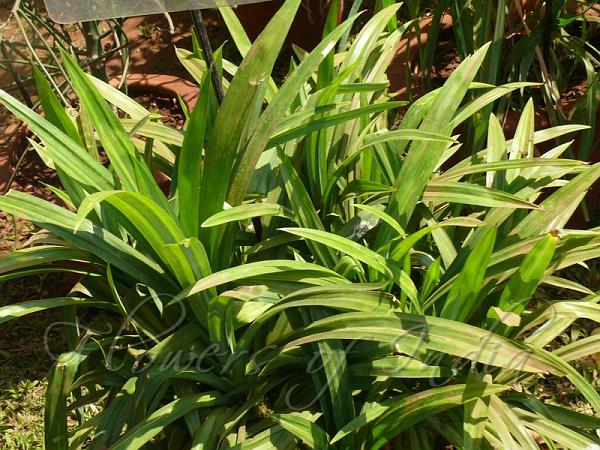|
| Basmati Plant |
|

|

| File size | 162328 |
| Original date | 2/25/12 10:46 AM |
| Resolution | 800 x 600 |
| Flash | Flash did not fire, auto |
| Focal length | 11.9mm |
| Exposure time | 1/250s |
| Aperture | 4.5 |
| Focus Distance | |
| Metering Mode | Multi-segment |
| Camera make | Panasonic |
| Camera model | DMC-FZ50 |
| Sensor type | OneChipColorArea |
|
|
|
|
Photo: |
Botanical name: Pandanus amaryllifolius Family: Pandanaceae (Screw pine family)
Synonyms: Pandanus hasskarlii, Pandanus latifolius, Pandanus odorus
Synonyms: Pandanus hasskarlii, Pandanus latifolius, Pandanus odorus
Basmati Plant is a plant that is unknown in the wild,
but is widely cultivated. It is an upright, green plant with fan-shaped
sprays of long, narrow, blade-like leaves and woody aerial roots. The
plant is sterile, with flowers only growing very rarely, and is
propagated by cuttings. The leaves of the plants are widely used in
flavoring food. In India, the leaf pieces are added to cooking rice,
which gives it a basmati smell. The characteristic aroma of pandan is
caused by the aroma compound 2-acetyl-1-pyrroline, found in the lower
epidermal papillae; the compound gives white bread, jasmine rice, and
basmati rice. Basmati Plant is a true cultigen, and is believed
to have been domesticated in ancient times. It is sterile and can only
reproduce vegetatively through suckers or cuttings. It was first
described from specimens from the Maluku Islands, and the rare presence
of male flowers in these specimens may indicate that it is the origin
of the species. However, as no other wild specimens have been found,
this is still conjecture.
| Identification credit: Aarti Khale | Photographed in cultivation. |
• Is this flower misidentified? If yes,